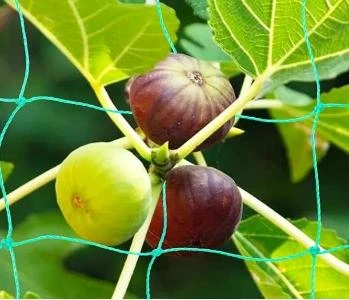-
 Afrikaans
Afrikaans -
 Albanian
Albanian -
 Amharic
Amharic -
 Arabic
Arabic -
 Armenian
Armenian -
 Azerbaijani
Azerbaijani -
 Basque
Basque -
 Belarusian
Belarusian -
 Bengali
Bengali -
 Bosnian
Bosnian -
 Bulgarian
Bulgarian -
 Catalan
Catalan -
 Cebuano
Cebuano -
 China
China -
 Corsican
Corsican -
 Croatian
Croatian -
 Czech
Czech -
 Danish
Danish -
 Dutch
Dutch -
 English
English -
 Esperanto
Esperanto -
 Estonian
Estonian -
 Finnish
Finnish -
 French
French -
 Frisian
Frisian -
 Galician
Galician -
 Georgian
Georgian -
 German
German -
 Greek
Greek -
 Gujarati
Gujarati -
 Haitian Creole
Haitian Creole -
 hausa
hausa -
 hawaiian
hawaiian -
 Hebrew
Hebrew -
 Hindi
Hindi -
 Miao
Miao -
 Hungarian
Hungarian -
 Icelandic
Icelandic -
 igbo
igbo -
 Indonesian
Indonesian -
 irish
irish -
 Italian
Italian -
 Japanese
Japanese -
 Javanese
Javanese -
 Kannada
Kannada -
 kazakh
kazakh -
 Khmer
Khmer -
 Rwandese
Rwandese -
 Korean
Korean -
 Kurdish
Kurdish -
 Kyrgyz
Kyrgyz -
 Lao
Lao -
 Latin
Latin -
 Latvian
Latvian -
 Lithuanian
Lithuanian -
 Luxembourgish
Luxembourgish -
 Macedonian
Macedonian -
 Malgashi
Malgashi -
 Malay
Malay -
 Malayalam
Malayalam -
 Maltese
Maltese -
 Maori
Maori -
 Marathi
Marathi -
 Mongolian
Mongolian -
 Myanmar
Myanmar -
 Nepali
Nepali -
 Norwegian
Norwegian -
 Norwegian
Norwegian -
 Occitan
Occitan -
 Pashto
Pashto -
 Persian
Persian -
 Polish
Polish -
 Portuguese
Portuguese -
 Punjabi
Punjabi -
 Romanian
Romanian -
 Russian
Russian -
 Samoan
Samoan -
 Scottish Gaelic
Scottish Gaelic -
 Serbian
Serbian -
 Sesotho
Sesotho -
 Shona
Shona -
 Sindhi
Sindhi -
 Sinhala
Sinhala -
 Slovak
Slovak -
 Slovenian
Slovenian -
 Somali
Somali -
 Spanish
Spanish -
 Sundanese
Sundanese -
 Swahili
Swahili -
 Swedish
Swedish -
 Tagalog
Tagalog -
 Tajik
Tajik -
 Tamil
Tamil -
 Tatar
Tatar -
 Telugu
Telugu -
 Thai
Thai -
 Turkish
Turkish -
 Turkmen
Turkmen -
 Ukrainian
Ukrainian -
 Urdu
Urdu -
 Uighur
Uighur -
 Uzbek
Uzbek -
 Vietnamese
Vietnamese -
 Welsh
Welsh -
 Bantu
Bantu -
 Yiddish
Yiddish -
 Yoruba
Yoruba -
 Zulu
Zulu
Jan . 13, 2025 14:46
Back to list
Fruits tree netting Insect-proof mesh cover
Sweeping nets for insects are indispensable tools in the realm of entomology and beyond, offering both amateurs and professionals a gateway to discovering the incredible biodiversity of the insect world. As a recognized instrument used for collecting insects, these nets have evolved in design and function, aligning with advancements in entomological studies and needs.
The authority in the use of sweeping nets extends to the scientific value they provide. These nets contribute significantly to biodiversity studies, serving as a primary tool for population assessments and ecological research. For professionals, the ability to gather accurate data using reliable equipment underscores the importance of choosing reputable brands known for their durability and precision engineering. Trustworthiness in discussing sweeping nets rests on transparent manufacturing standards and user testimonials. Reputable brands often invite feedback from the scientific community to drive improvements in product design and functionality. Potential purchasers should seek out products with robust user reviews from credible sources, ensuring that the net's performance in the field matches the claims made by the manufacturer. For amateur naturalists and professional entomologists, the sweeping net is more than a simple tool—it is a bridge to understanding myriad ecological interactions. Whether for joy or scientific inquiry, selecting the right sweeping net enhances the fieldwork experience, supporting broader efforts in conservation and biodiversity documentation. In each sweep, lies the promise of discovery and the betterment of our understanding of the natural world.


The authority in the use of sweeping nets extends to the scientific value they provide. These nets contribute significantly to biodiversity studies, serving as a primary tool for population assessments and ecological research. For professionals, the ability to gather accurate data using reliable equipment underscores the importance of choosing reputable brands known for their durability and precision engineering. Trustworthiness in discussing sweeping nets rests on transparent manufacturing standards and user testimonials. Reputable brands often invite feedback from the scientific community to drive improvements in product design and functionality. Potential purchasers should seek out products with robust user reviews from credible sources, ensuring that the net's performance in the field matches the claims made by the manufacturer. For amateur naturalists and professional entomologists, the sweeping net is more than a simple tool—it is a bridge to understanding myriad ecological interactions. Whether for joy or scientific inquiry, selecting the right sweeping net enhances the fieldwork experience, supporting broader efforts in conservation and biodiversity documentation. In each sweep, lies the promise of discovery and the betterment of our understanding of the natural world.
Latest news
-
Shipping Plastic Bags for Every NeedNewsJul.24,2025
-
Safety Netting: Your Shield in ConstructionNewsJul.24,2025
-
Plastic Mesh Netting for Everyday UseNewsJul.24,2025
-
Nylon Netting for Every UseNewsJul.24,2025
-
Mesh Breeder Box for Fish TanksNewsJul.24,2025
-
Expanded Steel Mesh Offers Durable VersatilityNewsJul.24,2025











